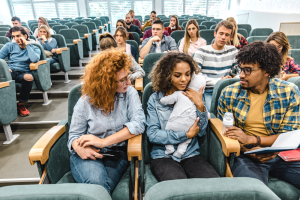As technology continues to advance at an unprecedented rate, the question of whether robots will soon be a common sight in our children’s classrooms is a topic of discussion among educators and parents alike. With the increasing integration of artificial intelligence and robotics into various aspects of our daily lives, it seems only natural that these technologies would find their way into the classroom as well.
One of the key arguments in favor of introducing robots into the classroom is their potential to enhance the learning experience for students. Robots can be programmed to provide personalized learning experiences, adapting to each student’s individual learning style and pace. They can also serve as resources for teachers, helping to alleviate some of the burdens of large class sizes and diverse student needs.
Additionally, robots can provide valuable hands-on learning opportunities for students in subjects such as robotics, engineering, and computer science. By working with robots, students can gain practical experience with coding, problem-solving, and critical thinking skills – all of which are essential in today’s technology-driven world.
Despite these potential benefits, there are also concerns about the impact of robots on the traditional education system. Some argue that the presence of robots in the classroom may detract from the human connection between teachers and students, diminishing the value of social interaction and emotional support in the learning process.
There are also ethical considerations to take into account when introducing robots into the classroom. Issues such as data privacy, algorithmic bias, and the potential for job displacement among educators are important factors to consider when implementing these technologies in educational settings.
Ultimately, the decision to incorporate robots into our children’s classrooms will require careful consideration and planning. While robots have the potential to revolutionize the way we teach and learn, it is essential to approach their integration with caution and mindfulness of the potential consequences.
In conclusion, the prospect of robots in our children’s classrooms is certainly a possibility in the not-too-distant future. As technology continues to evolve, it is crucial for educators, parents, and policymakers to engage in open and informed conversations about the role of robots in education and to carefully weigh the potential benefits and challenges that they may bring. Only then can we ensure that our children receive the best possible educational experiences in a rapidly changing world.



